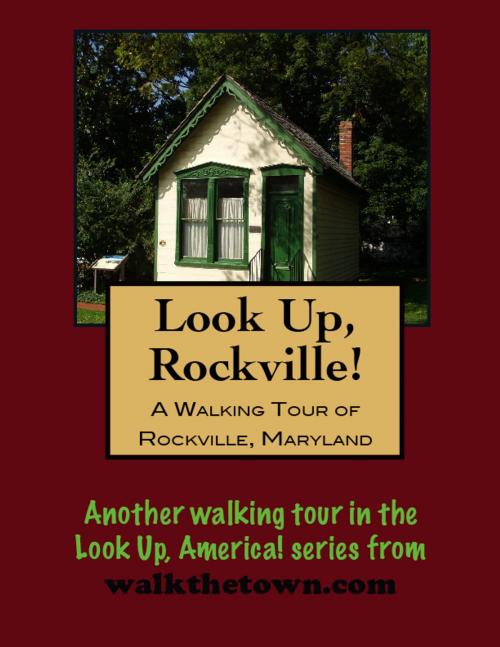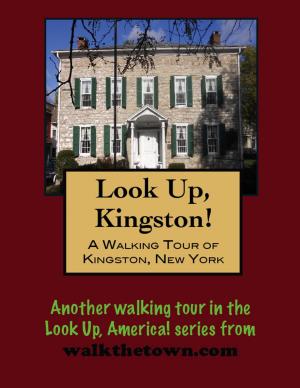| Author: | Doug Gelbert | ISBN: | 9781458121226 |
| Publisher: | Doug Gelbert | Publication: | March 4, 2011 |
| Imprint: | Smashwords Edition | Language: | English |
| Author: | Doug Gelbert |
| ISBN: | 9781458121226 |
| Publisher: | Doug Gelbert |
| Publication: | March 4, 2011 |
| Imprint: | Smashwords Edition |
| Language: | English |
There is no better way to see America than on foot. And there is no better way to appreciate what you are looking at than with a walking tour. This walking tour of Rockville, Maryland is ready to explore when you are. Each walking tour describes historical, architectural landmarks, cultural sites and ecclesiastic touchstones and provides step-by-step directions.
Every tour also includes a quick primer on identifying architectural styles seen on American streets.
Rockville began when Owen’s Ordinary, an inn and tavern, was established in this area around 1750. It functioned as the seat of lower Frederick County and in 1776 became the seat of Montgomery County when it was created. In 1784, William P. Williams subdivided 45 acres of his land into building lots and called it “Williamsburgh.” Fifteen years later, structures had been built on 38 lots. The Williamsburgh plat had legal problems and in November 1801, the Maryland General Assembly directed that the lots be resurveyed and a town erected “to be called Rockville.”
The town plan was recorded in 1803. Rockville grew from a convenient crossroads meeting place in the 1750s to become the legal and market center of the county. The tiny village was selected as the seat of local government in 1776 for its central location and the presence of taverns and inns to accommodate those with court business. Rockville was incorporated in 1860.
Rockville’s businesses were not separated from the residential areas as today. Craftspeople and merchants often lived on the second story or next to their businesses. However, proximity to the Court House influenced many hotels, inns, and businesses to locate along Montgomery Avenue, Commerce Lane (now West Montgomery Avenue), and Washington Street. The area consisted of a variety of uses, including brick institutional buildings, small frame residences, 19th century hotels, and small businesses. The area of North Washington Street just north of Middle Lane was the location of the earliest black settlement in the town.
In the 1950s, increased traffic, lack of parking, and economic problems led City officials to redevelop the 46-acre area by demolishing most of the old buildings and replacing them with an enclosed mall. The Rockville Mall was razed in 1995 in an effort to revitalize the Town Center.
Our walking tour will start at a house museum that 200 years ago must have fit it with the log homes and humble abodes of the village as one of today’s sleek modern structures would have...
There is no better way to see America than on foot. And there is no better way to appreciate what you are looking at than with a walking tour. This walking tour of Rockville, Maryland is ready to explore when you are. Each walking tour describes historical, architectural landmarks, cultural sites and ecclesiastic touchstones and provides step-by-step directions.
Every tour also includes a quick primer on identifying architectural styles seen on American streets.
Rockville began when Owen’s Ordinary, an inn and tavern, was established in this area around 1750. It functioned as the seat of lower Frederick County and in 1776 became the seat of Montgomery County when it was created. In 1784, William P. Williams subdivided 45 acres of his land into building lots and called it “Williamsburgh.” Fifteen years later, structures had been built on 38 lots. The Williamsburgh plat had legal problems and in November 1801, the Maryland General Assembly directed that the lots be resurveyed and a town erected “to be called Rockville.”
The town plan was recorded in 1803. Rockville grew from a convenient crossroads meeting place in the 1750s to become the legal and market center of the county. The tiny village was selected as the seat of local government in 1776 for its central location and the presence of taverns and inns to accommodate those with court business. Rockville was incorporated in 1860.
Rockville’s businesses were not separated from the residential areas as today. Craftspeople and merchants often lived on the second story or next to their businesses. However, proximity to the Court House influenced many hotels, inns, and businesses to locate along Montgomery Avenue, Commerce Lane (now West Montgomery Avenue), and Washington Street. The area consisted of a variety of uses, including brick institutional buildings, small frame residences, 19th century hotels, and small businesses. The area of North Washington Street just north of Middle Lane was the location of the earliest black settlement in the town.
In the 1950s, increased traffic, lack of parking, and economic problems led City officials to redevelop the 46-acre area by demolishing most of the old buildings and replacing them with an enclosed mall. The Rockville Mall was razed in 1995 in an effort to revitalize the Town Center.
Our walking tour will start at a house museum that 200 years ago must have fit it with the log homes and humble abodes of the village as one of today’s sleek modern structures would have...















